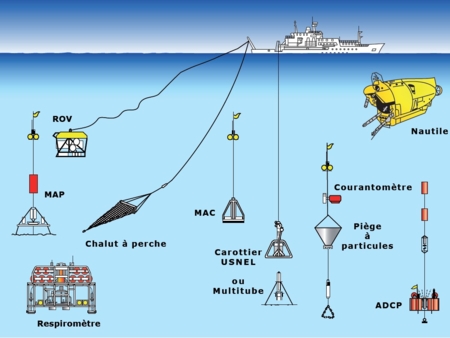Diversity and function of microbial mats of hydrothermal sites from Lucky Strike
The Lucky Strike hydrothermal vent field is located on the Mid-Atlantic Ridge at a depth of 1650-1700 meters). Mussels (Bathymodiolus azoricus) dominate the megafauna and form large assemblages in low temperature flow areas. The environment around theses assemblages is characterized by sulfides and methane concentrations permitting chemosynthetic activity. Lucky Strike’s microbial mats appeared as white attached filaments covering a large part of the mussel assemblages and fluid exposed hydrothermal deposits. Light microscopy observations revealed a wide diversity of morphologies both in shape and size among microbial populations. To better understand microbial mats function in the ecosystem and their possible relationships with other biological communities, their diversity and metabolically active populations were investigated through molecular and cultural approaches. Archaeal diversity appeared to be limited to the Thaumarchaeota but bacterial diversity was considerably higher, even if the Proteobacteria and Bacteroidetes phyla were dominant. DNA and RNA functional gene libraries analyses also revealed the diversity and activity of chemolithoautotrophic populations. Both PCR and RT-PCR, using new Bathymodiolus sp. symbionts 16S rRNA specific gene primers, revealed sequences affiliated to both methanotrophic and thiotrophic mussel endosymbionts, suggesting that living symbionts are present in the mats samples. Cultural approaches didn’t allow us to isolate new species, but we performed a long time enrichment culture under controlled conditions during the Bathyluck (2009) cruise. The molecular survey of this culture, designed for sulfo-oxidizers, revealed organotrophic and lithotrophic communities that were not retrieved by the molecular characterization of environmental mat samples.







